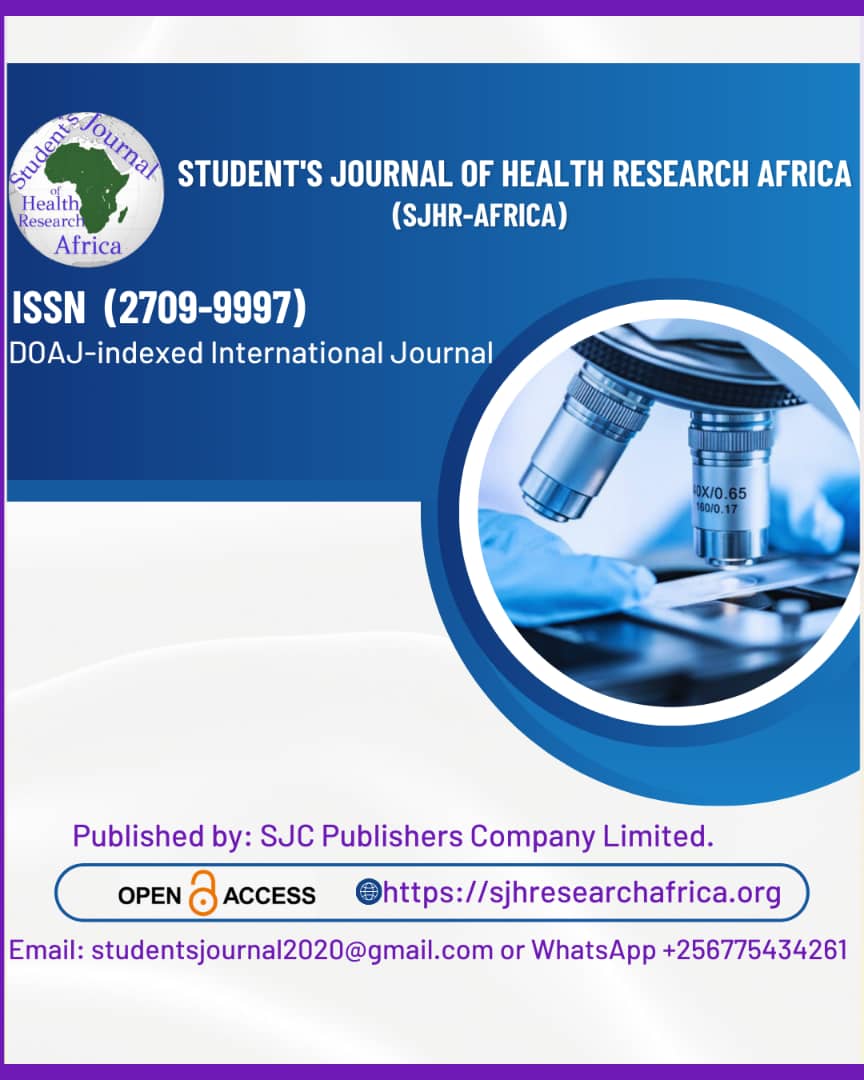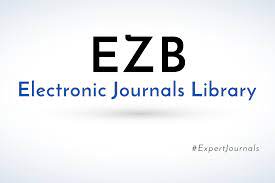Unveiling the Role of PHI in Prostate Cancer Diagnosis: Insights from an Indian Population Study
DOI:
https://doi.org/10.51168/sjhrafrica.v5i12.1478Keywords:
PHI, prostate cancer, prostate health index, prostate cancer screening, free PSA, PSA prognosisAbstract
Introduction
The Prostate Health Index (PHI) is based on various Prostate-specific Antigen (PSA) derivatives and has been approved in Europe, Australia, and the United States. PHI outperforms its components for the prediction of overall and high-grade prostate cancer on biopsy. This study aimed to evaluate the usefulness of the Prostate Health Index (PHI) in the Indian context and its role in guiding biopsy decisions when prostate-specific antigen (PSA) levels fall within the borderline or inconclusive range.
Patients and Methods
A total of seventy-five patients with PSA in the range of 4-20ng/ml were enrolled in the study. For each patient, PSA parameters including total PSA, free PSA, and p2PSA were determined from blood samples. PHI was determined using the formula (Beckman Coulter) PHI= (p2PSA/free PSA) x √ PSA. All the patients underwent Trans-rectal ultrasound (TRUS)-guided prostate biopsy. The diagnostic performances of these PSA derivatives were compared to predict carcinoma prostate.
Results
About 53.33% were found to be of benign etiology and 46.67% were of malignant etiology based on the histopathology report of the prostate biopsy. PHI had the highest Area UnderThe Curve (AUC) value of 0.9686, followed by p2PSA (0.9236). At the cut-off value of 35.7 PHI has a sensitivity of 94.28% and a specificity of 90% to detect high-grade malignancy. Using the cut-off value of PHI=35, 46.67% of the prostate biopsies could be prevented.
Conclusion
PHI outperformed PSA in detecting Prostate cancer (PC). Higher value of PHI was connected to high-grade PC. The authors strongly feel that PHI should be widely available in India.
Recommendation
Biopsy is recommended for patients receiving an intermediate to high-risk PHI score as opposed to biopsy patients receiving a low PHI score.
References
Ferlay J, Shin HR, et al. GLOBOCAN 2008 v 1.2, Cancer Incidence and Mortality Worldwide: IARC Cancer Base No. 10. Lyon, France: International Agency for Research on Cancer; 2010.
Garcia M, Ward EM, Hao Y, Siegel RL, et al. Global Cancer facts and figures 2007. Atlanta, GA: American Cancer Society; 2007.
Hsing AW, Tsao L, Devesa SS. International trends and patterns of prostate cancer incidence and mortality. Int J Cancer 2000;85:60e7. https://doi.org/10.1002/(SICI)1097-0215(20000101)85:1<60::AID-IJC11>3.3.CO;2-2
Robbins AS, Koppie TM, Gomez SL, et al. Differences in prognostic factors and survival among white and Asian men with prostate cancer, California, 1995-2004.Cancer 2007;110:1255e63. https://doi.org/10.1002/cncr.22872 PMid:17701951
Akaza H, Onozawa M et al. Prostate cancer trends in Asia. World J Urol 2017;35:859e65. https://doi.org/10.1007/s00345-016-1939-7 PMid:27644231
James R Hebert, Santosh S Ghumare, Prakash C Gupta. Stage at Diagnosis and Relative Differences in Breast and Prostate Cancer Incidence in India: Comparison with the United States. Asian Pacific J Cancer Prev, 7, 547-555
Stamey TA, Yang N, Hay AR, McNeal JE et al . Prostate-specific antigen as a serum marker for adenocarcinoma of the prostate. N Engl J Med 1987;317:909e16. https://doi.org/10.1056/NEJM198710083171501 PMid:2442609
Borghesi M, Ahmed H, Nam R, Schaeffer E, Schiavina R, Taneja S, et al. Complications after systematic, random, and image-guided prostate biopsy. Eur Urol 2017;71:353e65. https://doi.org/10.1016/j.eururo.2016.08.004 PMid:2754316
Carlsson SV, Roobol MJ. Improving the evaluation and diagnosis of clinically significant prostate cancer in 2017. Curr Opin Urol 2017;27:198e204. https://doi.org/10.1097/MOU.0000000000000382 PMid:28221219 PMCid:PMC5381721
Cabarkapa S, Perera M, McGrath S, Lawrentschuk N. Prostate cancer screening with prostate-specific antigen: a guide to the guidelines. Prostate Int 2016;4:125e9. https://doi.org/10.1016/j.prnil.2016.09.002 PMid:27995110 PMCid: PMC5153437
Mikolajczyk SD, Catalona WJ, Evans CL, Linton HJ, Millar LS, Marker KM, et al. Proenzyme forms of prostate-specific antigen in serum improve the detection of prostate cancer. Clin Chem. 2004;50:1017e25.
Semjonow A, Kopke T, Eltze E, Pepping-Schefers B, Bürgel H, Darte C. Preanalyticalin-vitro stability of [-2] proPSA in blood and serum. Clin Biochem2010;43:926e8. https://doi.org/10.1016/j.clinbiochem.2010.04.062
PMid:20450900
Wang W, Wang M, Wang L, Adams TS, Tian Y, Xu J. Diagnostic ability of %p2PSA and Prostate Health Index for aggressive prostate cancer: a meta-analysis. Sci Rep 2014;4:512. https://doi.org/10.1038/srep05012
PMid:24852453 PMCid: PMC5381367
Catalona, W. J. et al. Serum pro-prostate specific antigen preferentially detects aggressive prostate cancers in men with 2 to 4 ng/ml prostate specific antigen. J Urol. 171, 2239-2244 (2004). https://doi.org/10.1097/01.ju.0000127737.94221.3e PMid:15126794
Tan LG, Tan YK, Tai BC, Tan KM, Gauhar V, Tiong HY, et al. Prospective validation of %p2PSA and the Prostate Health Index, in prostate cancer detection in initial prostate biopsies of Asian men, with total PSA 4-10 ng ml-1. Asian J Androl 2017;19:286e90. https://doi.org/10.4103/1008-682X.168687 PMid:26908062 PMCid:PMC5427782
Chiu PK, Teoh JY, Yee CH, Chan ES, Hou SM, et al. Extended use of Prostate Health Index and percentage of [-2]pro-prostate-specific antigen in Chinese men with prostate-specific antigen 10-20 ng/mL and normal digital rectal examination. Investig Clin Urol 2016;57:336e42. https://doi.org/10.4111/icu.2016.57.5.336 PMid:27617315 PMCid:PMC5017555
Na R, Ye D, Chen H , Wu Y, Zhang G, Qi J et al. Performance of serum prostate-specific antigen isoform [-2]proPSA (p2PSA) and the Prostate Health Index (PHI) in a Chinese hospital-based biopsy population. Prostate 2014;74: 1569e75. https://doi.org/10.1002/pros.22876 PMid:25176131
Ng CF, Lam NY, Lam HC, Chiu PK, Lee KW, Hou SS. The Prostate Health Index in predicting initial prostate biopsy outcomes in Asian men with prostate-specific antigen levels of 4-10 ng ml-1. Int Urol Nephrol 2014;46:711e7. https://doi.org/10.1007/s11255-013-0582-0 PMid:24136184
Mottet N, Bellmunt J, Cumberbatch MG, Bolla M, De Santis M, Briers E, et al. EAU-ESTRO SIOG guidelines on prostate cancer. Part 1: screening, diagnosis, and local treatment with curative intent. Eur Urol 2017;71:618e29.
https://doi.org/10.1016/j.eururo.2016.08.003 PMid:27568654
Catalona W, Wei JT, Sanda M, Klee GG, Partin A, Bangma CH, et al. A multicenter study of [-2] pro-prostate specific antigen combined with prostate-specific antigen and free prostate-specific antigen for prostate cancer detection in the 2.0 to 10.0 ng/ml prostate specific antigen range. J Urol 2011;185:1650e5.
https://doi.org/10.1016/j.juro.2010.12.032 PMid:21419439 PMCid:PMC3140702
Giorgio Guazzoni , Massimo Lazzeri , Luciano Nava , Vincenzo Scattoni Giovanni Lughezzani ,Alessandro Larcher , et al. Preoperative Prostate-Specific Antigen Isoform p2PSA and Its Derivatives, %p2PSA and Prostate Health Index Predict Pathologic Outcomes in Patients Undergoing Radical Prostatectomy for Prostate Cancer. European Urology 61(2012): 455-466 https://doi.org/10.1016/j.eururo.2011.10.038 PMid:22078333
Lazzeri, M., Haese A., de la Taille, A. PalouRedorta, J., McNicholas, T., Lughezzani, G. et al. Serum isoform [-2]proPSA derivatives significantly improve prediction of prostate cancer at initial biopsy in a total PSA range of 2-10 ng/ml: a multicentric European study. Eur Urol 63:986-994. https://doi.org/10.1016/j.eururo.2013.01.011 PMid:23375961
Sanda, M., Wei, J., Broyles, D., Shin, S., Partin, A., Klee, G. et al. (2013) Evaluation of the Prostate Health Index (PHI) for improving prostate cancer detection and identification of clinically significant prostate cancer in the 4 to 10 ng/mL PSA range. In: Proceedings of American Urological Association Annual Meeting, San Diego
Po‑Fan Hsieh , Wei‑Juan Li, Han Chang, Chao‑Hsiang Chang , Chi‑Ping Huang, et al.Combining prostate health index and multiparametric magnetic resonance imaging in the diagnosis of clinically significant prostate cancer in an Asian population. World Journal of Urology
J Juan Escudero, A Montoro, E Escudero, M Fabuel del Toro, M Ramos de Campos, A Duran-Rivera, et al. -2proPSA and Prostate Health Index Usefulness for the Diagnosis of Prostate Cancer for PSA Range between 3 and 10 ng/ml and E López Alcina. Int Arch Urol Complic 2018, 4:041 https://doi.org/10.23937/2469-5742/1510041
Yu GP, Ye DW, Qi J, Liu F, Wu YS, Na R, et al. Performance of the Prostate Health Index in predicting prostate biopsy outcomes among men with a negative digital rectal examination and transrectal ultrasonography. Asian J Androl 2016;18:633e8. https://doi.org/10.4103/1008-682X.172823 PMid:26975483 PMCid: PMC4955192
Network NCC (2018) NCCN guideline prostate cancer early detection. Version 2. 2018. https ://www.nccn.org/professionals/physician_gls/pdf/prost ate_detec tion.pdf. Accessed Dec 09, 2018
Ito K, Miyakubo M, Koike H, Matsui H, Shibata Y, Suzuki K (2013) Diagnostic significance of [- 2] pro-PSA and prostate dimension-adjusted PSA-related indices in men with total PSA in the 2.0-10.0 ng/mL range. World J Urol 31(2):305-311. https://doi.org/10.1007/s00345-012-0927-9PMid:22903772
Chiu PK, Ng CF, Semjonow A, Vincendeau S, Houlgatte A, et al (2019) A multicentre evaluation of the role of the prostate health index (PHI)in regions with a differing prevalence of prostate cancer: adjustment of PHI reference ranges are needed for European and Asian settings. EurUrol 75(4):558-561. https://doi.org/10.1016/j.eururo.2018.10.047 PMid:30396635
Marija Barisiene, Arnas Bakavicius, Diana Stanciute, Arunas Zelvys, Albertas Ulys et al . Prostate Health Index and Prostate Health Index Density as Diagnostic Tools for Improved Prostate Cancer Detection. BioMed Research InternationalVolume 2020, Article ID 9872146, 15 pages. https://doi.org/10.1155/2020/9872146 PMid:32775459 PMCid:PMC7396080
Downloads
Published
How to Cite
Issue
Section
License
Copyright (c) 2024 Aman Gupta, Vijay Kumar Shukla, Kumar Pankaj, Rajeev Chaudhari, Tarun Singh, Nidhi Gupta

This work is licensed under a Creative Commons Attribution-NonCommercial-NoDerivatives 4.0 International License.





















